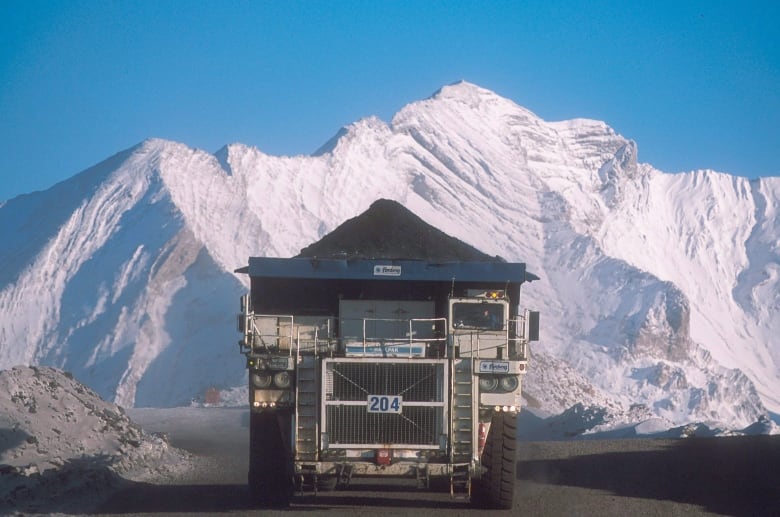When will steel go green? How B.C. coal fuels one of the highest emitting industries in the world
Steel production is responsible for about 7% of global
greenhouse gas emissions, research group says
So why then does British Columbia continue to be the Canadian leader in coal extraction and export? The answer: worldwide demand for steel continues to soar.
Niney-five per cent of B.C. coal is metallurgical as opposed to thermal. Thermal coal is used to make steam that produces electricity. Metallurgical coal, or coking coal, is mined to produce the carbon used in steel-making and is shipped mostly to Asian countries for that purpose.
In developing countries such as China and India, where infrastructure like railways, roads, bridges and buildings is being built en masse, steel is crucial to continued growth.
But just because B.C. doesn't produce and export thermal coal — which is nearly universally maligned for its high emissions — it doesn't mean the province is not contributing to a massive amount of carbon emissions.
According to research organization Net Zero Steel, it's estimated that seven per cent of all global greenhouse gas emissions come from manufacturing steel.
How is B.C. coal used?
To make steel, oxygen must be removed from iron oxide. In order to do that, a fuel called coke is required, and that's made by heating metallurgical coal in a blast furnace. Iron ore reduction and the subsequent smelting process are by far the most carbon intensive aspects of steel-making.
- Have questions about COP26 or climate science, policy or politics? Email us: ask@cbc.ca. Your input helps inform our coverage.
According to the province's 2020 overview of the coal industry, production volumes were expected to be 25.1 million tonnes in 2020, down from 30 million tonnes in 2019.
Coal is easily B.C.'s most valuable mined product, with sales close to $4 billion.
In 2019, B.C. coal represented 48 per cent of all Canadian production. The provincial government says coal production employs thousands of people, mostly in the Elk Valley in southeastern B.C. and in the northeastern region of the province near Tumbler Ridge.
Steel production can be cleaner
Experts say there are a number of ways to lower emissions from steel-making, but perhaps the most promising possibility is the idea of removing metallurgical coal from the process altogether.
Clean hydrogen can be used instead to strip the oxygen from the iron ore.
"It's quite feasible that starting, say, five years from now, all new steel plants are using some version of this technology," said Chris Bataille, adjunct professor at Simon Fraser University and a lead author for the United Nations' Intergovernmental Panel on Climate Change.
"It's not even a matter of how much coal is there.… Eventually, if we're serious about decarbonizing the steel industry, there won't be any demand for coal."
The green steel-making industry is furthest ahead in Sweden, where two facilities, Hybrit and H2 Green Steel, say they're only a few years away from commercial production.
Bataille, who has been studying how to eliminate emissions from heavy industries for the past five years, thinks metallurgical coal has a maximum of another 30 years of usefulness in steel production.
But not everyone agrees.
The case for more coal
If the swing toward green steel production was to happen quickly, it would undoubtedly render B.C.'s coal industry obsolete. But the transition is going to take time.
Mining giant Teck Resources, which runs the four coal mines in southeast B.C., says three of them have reserves that could last more than 28 years — with the Greenhills operation containing enough to support 47 more years of mining.
Teck says it made 35 per cent of its nearly $4 billion in 2020 revenue from coal mining.
"Steel and steel-making coal are needed to build the infrastructure required for the transition to a low-carbon economy, including renewable power systems," the company wrote in a statement.
"Our analysis suggests that across multiple climate scenarios … demand for seaborne steel-making coal will remain robust through 2050."
Clean hydrogen shortage
While it might seem obvious that the industry powers are looking to continue building profits from coal, there are other obstacles in the way of green steel, too.
There's the issue of a clean hydrogen shortage. Bataille says that's because broad demand isn't there just yet and that manufacturers will eventually produce their own.
But John Steen, an associate professor and distinguished scholar in global mining futures at UBC, argues that clean hydrogen is much more expensive than hydrogen produced using natural gas. He's worried production simply won't keep up with the sheer scale of the need for renewable power.
"Hydrogen isn't a magic bullet, so we're caught in a real catch-22," said Steen, who has collaborated on research with mining companies like Teck and Rio Tinto.
He thinks the idea of coal-free steel production on a massive scale is still decades away based on the demand for steel, slow adoption of green practices and those hydrogen supply shortages.
"The simple response is, 'Let's ban all coal.' And what would you replace it with? Where are these billions of tonnes of steel going to come from?" he said.
Steen points out that even infrastructure required to lower emissions, like wind turbines, solar panels and electric cars, all require steel. And if low-lying cities fall victim to rising sea levels, he says we'll need even more steel to either defend those cities or relocate them.
And so we're left with the same conundrum we face in almost every debate about natural resources and climate solutions.
In clean hydrogen-powered steel production, there is a technology available to move away from high-emitting practices. But, as always, the big hurdle is the transition and how aggressively it's pursued.
LISTEN | Reporter Jeremy Allingham talks about the challenges B.C. faces moving away from coal:






No comments:
Post a Comment